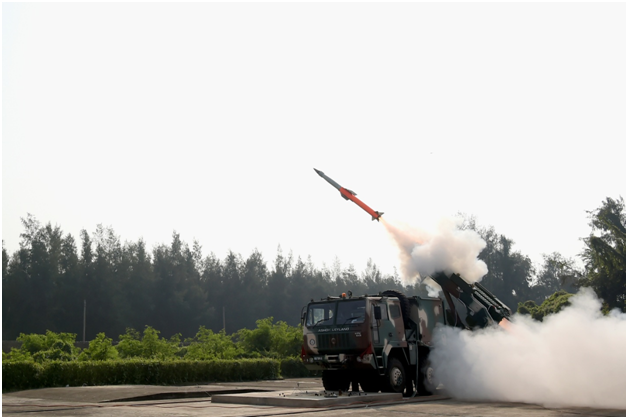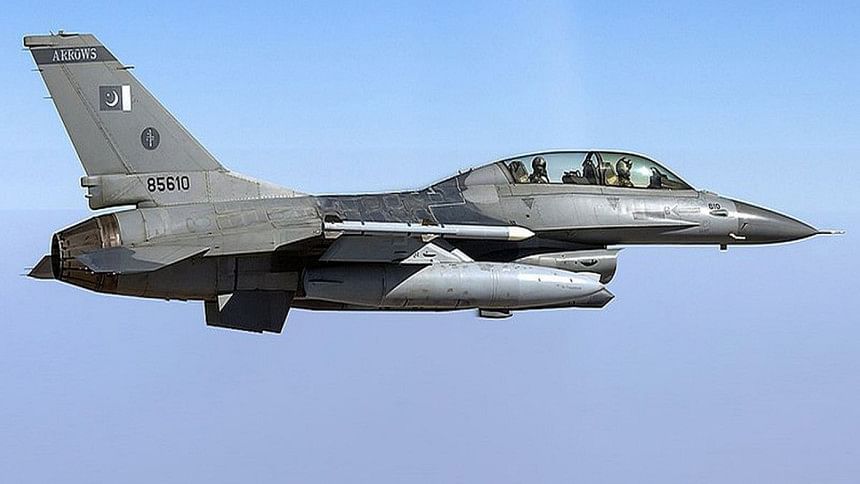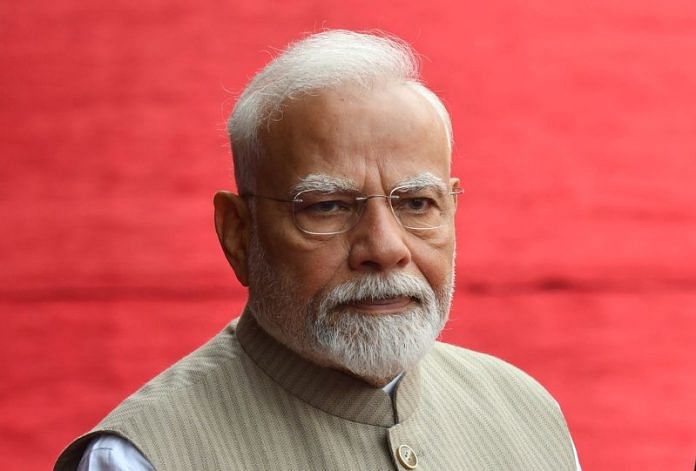SOURCE: RAUNAK KUNDE / NEWS BEAT / IDRW.ORG

India’s ambitious fifth-generation Advanced Medium Combat Aircraft (AMCA) program is set to take a significant leap forward as the Aeronautical Development Agency (ADA) collaborates with private sector companies and academic institutions to fast-track the integration of artificial intelligence (AI) and autonomous systems. This strategic partnership aims to position the AMCA as a cutting-edge fighter jet, aligning with the Indian Air Force’s (IAF) vision of a highly autonomous, AI-driven platform capable of meeting the demands of modern aerial warfare.
According to an ADA official speaking to idrw.org, the development of AI and autonomy for the AMCA will unfold in multiple phases, as outlined in close coordination with the IAF. The IAF and ADA have meticulously defined the levels of independence to be incorporated, ensuring the aircraft evolves into a force multiplier that blends human oversight with advanced machine intelligence. This phased approach will see the AMCA’s AI capabilities progressively enhanced, adapting to operational needs and technological advancements over time.
Continue readingSOURCE: RAUNAK KUNDE / NEWS BEAT / IDRW.ORG

The Indian Air Force (IAF) is closely monitoring the development of the Abhimanyu Collaborative Combat Aircraft (CCA), a cutting-edge jet-powered drone designed by Bengaluru-based NewSpace Research and Technologies in partnership with the Indian Navy. Unveiled at Aero India 2025, Abhimanyu represents India’s first privately developed, jet-powered unmanned aerial system (UAS), poised to redefine tactical air warfare through its advanced capabilities and manned-unmanned teaming (MUM-T) framework. This innovative platform, tailored for high-speed, long-range combat roles, is sparking significant interest across India’s defense ecosystem, with the IAF exploring its potential to complement its own combat air teaming initiatives.
Abhimanyu is not just another drone; it is a modular, artificial intelligence (AI) and machine learning (ML)-powered combat aircraft designed to operate as a “loyal wingman” alongside manned fighter jets. With a compact 4-meter wingspan and a low radar cross-section (RCS) design, it incorporates features like recessed engine intakes and a continuous chine-line to minimize radar detection, making it ideal for high-risk missions. The drone’s specifications include a top speed of approximately 300 knots (550 km/h), a range of 1,000 kilometers (620 miles), and a service ceiling of 20,000 feet, positioning it as a versatile asset for both naval and potential air force applications.
Continue readingSOURCE: RAUNAK KUNDE / NEWS BEAT / IDRW.ORG

In the wake of Pakistan’s unsuccessful attempt to neutralize India’s prized S-400 Triumf air defense system using the Chinese-supplied CM-400AKG supersonic missile during recent border clashes, the Indian Air Force (IAF) is taking decisive steps to enhance its air defense architecture. The IAF is now planning to deploy an additional layer of protection for its S-400 systems, potentially through the procurement of truck-based Very Short Range Surface-to-Air Missiles (VL-SRSAM) or Quick Reaction Surface-to-Air Missiles (QRSAM). This move aims to fortify the S-400’s defenses against evolving threats, ensuring India’s air defense network remains robust and resilient.
The S-400, known as the “Sudarshan Chakra” in India, is a long-range surface-to-air missile (SAM) system capable of engaging targets up to 400 km away. Regarded as a strategic asset, it has significantly strengthened India’s ability to counter aerial threats, including aircraft, cruise missiles, and ballistic missiles. Pakistan’s attempt to target the S-400 using the CM-400AKG, launched from a JF-17 Thunder fighter jet, was thwarted by India’s layered air defense network, with an older Russian-origin system reportedly neutralizing the threat. This incident highlighted both the limitations of the Chinese missile and the effectiveness of India’s integrated air defense grid.
Continue readingSOURCE: AFI

In a recent statement, Eric Trappier, CEO of Dassault Aviation, the manufacturer of the Rafale fighter jet, has cast doubt on Pakistan’s claims regarding the alleged destruction of three Rafale aircraft during a conflict with India. Trappier’s remarks come amid heightened tensions and conflicting narratives between the two nations, with Pakistan asserting significant losses on the Indian side.
Trappier emphasized that the Indian government has not provided detailed communication regarding the incident, leaving the exact events unclear. “The Indians did not communicate, so we do not know exactly what happened,” he stated. However, he directly challenged Pakistan’s claims, saying, “What we already know is that the words of the Pakistanis [three destroyed Rafale, ed] are inaccurate.”
Continue readingSOURCE: AFI

In a major revelation that challenges Pakistan’s official denial of any losses during the recent Indo-Pak conflict, sources within India’s top defence establishment have confirmed that multiple Pakistan Air Force (PAF) aircraft were shot down on the first night of hostilities. The confirmation is backed by a web of multi-layered surveillance and tracking systems operated by the Indian Armed Forces.
According to officials familiar with the matter, the Indian Air Force’s Netra Airborne Warning and Control System (AWACS) played a pivotal role in tracking PAF aircraft that were engaged during the conflict. At least one PAF jet was observed falling over Pakistan-occupied Kashmir (PoK), with confirmation from multiple sources, including infrared signatures, satellite imagery, and visual confirmation from cockpit feeds.
Continue readingSOURCE: AFI

The Defence Research and Development Organisation (DRDO) is set to achieve a significant milestone in India’s indigenous air defence capabilities with the planned test of the Project Kusha M1 missile in September 2025. This development marks a crucial step in bolstering India’s layered air defence network, designed to counter a wide range of aerial threats.
The M1 missile, part of the ambitious Project Kusha air defence system, was first showcased at Aero India 2025 earlier this year, where its airframe was unveiled, confirming substantial progress in its development. The public display underscored DRDO’s advancements in creating a homegrown, cutting-edge air defence system tailored to India’s strategic needs.
Continue readingSOURCE: AFI

In a significant milestone for India’s aerospace industry and its push for self-reliance in defence manufacturing, the Hindustan Turbo Trainer-40 (HTT-40), the country’s first indigenously designed and developed basic trainer aircraft, is expected to be delivered to the Indian Air Force (IAF) by September 2025. This achievement underscores Hindustan Aeronautics Limited’s (HAL) commitment to the “Aatmanirbhar Bharat” initiative and marks a critical step in addressing the IAF’s long-standing shortage of basic trainer aircraft.
The HTT-40, designed to replace the IAF’s ageing fleet of HPT-32 Deepak trainers, was first showcased at Aero India 2025, where it performed an impressive flypast, highlighting its capabilities as a reliable platform for training rookie pilots. Developed by HAL’s Aircraft Research and Design Centre, the aircraft is tailored to meet the IAF’s specific training requirements, offering a cost-effective and robust solution for Stage I basic flight training. The HTT-40 is a tandem-seat, fully aerobatic turboprop aircraft powered by a 1,100 hp Honeywell TPE331-12B engine, featuring modern avionics, an air-conditioned cockpit, zero-zero ejection seats, and excellent low-speed handling qualities.
Continue readingSOURCE: PTI

Sri Lanka Army Commander Lieutenant General BKGM Lasantha Rodrigo on Saturday reviewed the passing out parade of the IMA’s spring term and said true leadership is tested not in peace but in the chaos of conflict.
Addressing 451 gentlemen cadets who were commissioned into the armies of their respective countries, Lt Gen Rodrigo who is himself an alumnus of the institution said being commissioned is only the beginning.
Continue readingSOURCE: PTI
India on Saturday asserted that its position on the Israel-Iran situation remains as stated earlier and urged the international community to utilise channels of dialogue and diplomacy towards de-escalation, after the Shanghai Cooperation Organisation (SCO) issued a statement critical of Israel’s military strikes.
India had on Friday said it was “deeply concerned” at the recent developments between Iran and Israel and “closely monitoring” the evolving situation, even as New Delhi had urged both countries to avoid any escalatory steps.
Continue readingSOURCE: IANS

Prime Minister Narendra Modi will commence the first leg of his three-nation tour from Cyprus on Sunday before participating in the G7 Summit in Canada followed by visiting Croatia on his way back. This will be the Prime Minister’s first foreign visit after Operation Sindoor.
Before participating in the G7 Summit on Monday, PM Modi will visit Cyprus, the first by an Indian Prime Minister in more than two decades, and will also travel to Croatia, marking the first-ever visit by an Indian Prime Minister.
Continue readingSOURCE: IANS

Air India on Saturday said it is in the process of completing the one-time safety inspections, as mandated by the Directorate General of Civil Aviation (DGCA), for its Boeing 787 Dreamliner fleet.
This move comes in the wake of the tragic crash of a London-bound Air India flight (AI 171) from Ahmedabad. In a statement shared on social media platform X, Air India said that nine of its Boeing 787 aircraft have already undergone the required safety checks. “Air India is in the process of completing the one-time safety checks directed by the Indian aviation regulator, DGCA. These checks are being carried out on the Boeing 787 fleet as they return to India, before being cleared for their next operations,” the airline said.
Continue readingSOURCE: REUTERS

Members of Canada’s Sikh community who were warned by police that their lives were at risk and allege the Indian government is responsible for the threat are incensed by Ottawa’s invitation to Prime Minister Narendra Modi to the G7 summit in Alberta.
Canadian Prime Minister Mark Carney invited Modi, although India is not a G7 member, to attend the summit that starts on Sunday as a guest. It will be Modi’s first visit to Canada in a decade and a diplomatic test for Carney, a political neophyte.
Continue readingSOURCE: PTI

Jammu and Kashmir Lieutenant Governor Manoj Sinha on Saturday said the parks at tourist places, which were closed in view of security considerations after the April 22 Pahalgam attack, are being reopened in a phased manner to allow tourists to visit the destinations.
He said that some destinations will be reopened in the first phase from June 17. “Some places were closed after April 22 (attack) in view of security considerations. The divisional commissioners and IGPs of Kashmir and Jammu have taken reports from every district and it has been decided to reopen some destinations in a phased manner,” Sinha said.
Continue readingSOURCE: IANS

In a major development, the security forces in joint operations, have recovered 328 arms and around 9,300 different types of ammunition in restive Manipur, officials said here on Saturday.
A senior police official said that in the early hours of Saturday, on the basis of specific Intelligence reports regarding the presence of a large cache of arms and ammunition stashed in different areas of five Imphal valley districts, simultaneous search operations were launched at different locations.
Continue readingSOURCE: PTI
Four Naxalites, including three women, were killed in an encounter with security forces in a forest area of Balaghat district in Madhya Pradesh on Saturday, Chief Minister Mohan Yadav said.
Balaghat is a Maoist-affected district that shares borders with Maharashtra and Chhattisgarh. A grenade launcher, a self-loading rifle (SLR), two .315 bore rifles, other weapons and material were recovered from the site, Yadav said.
Continue reading